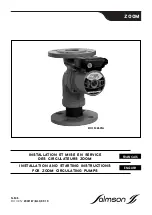
It is often said that a loudspeaker
is the weakest point in any audio
system and this is largely true. It
is the point at which the electrical
signal is converted into compressions
and rarefactions within the air that
our ears recognise as sound.
The mechanics of this transfer of
energy and how accurately this
occurs is a constant battle for the
loudspeaker engineer and one which
we, at Wharfedale, have lead the
field for over seventy-five years.
The measured performance of our
Opus
2
system is a testament to this
success. We have engineered a
loudspeaker system that is ruler-flat
across a wide band-width and yet
remains a relatively easy load for
any good amplifier system.
Many loudspeaker engineers aim for
a sound that could be described as
‘cosy’. It is easy to listen to for short
periods and immediately impressive
in demonstration. Most notably
though from the engineer’s point of
view, it hides many kinds of small
frequency response abhorrations.
Aside from not reproducing the
original recording faithfully though,
this can be inclined to cause
longer-term listening fatigue. A
cosy respnose is nowhere near as
accurate, revealing, transparent or,
in the long term, enjoyable as a well-
balanced flat response.
Even small abhorations in the
frequency response have a profound
effect on the overall loudspeaker
balance. Peaks in the response
spectrum can mask surrounding
frequencies leading to a loss of
transparency and a ‘blurring’ of the
soundstage. Because we engineer
our own drive units and cabinets in
complete synergy to the rest of the
design process, we control every
aspect of our drivers’ performance
and can get much closer to an ideal
performance.
M E A S U R E D P E R F O R M A N C E
Opus²
- 3:
Fr
eq
uency
Response






































